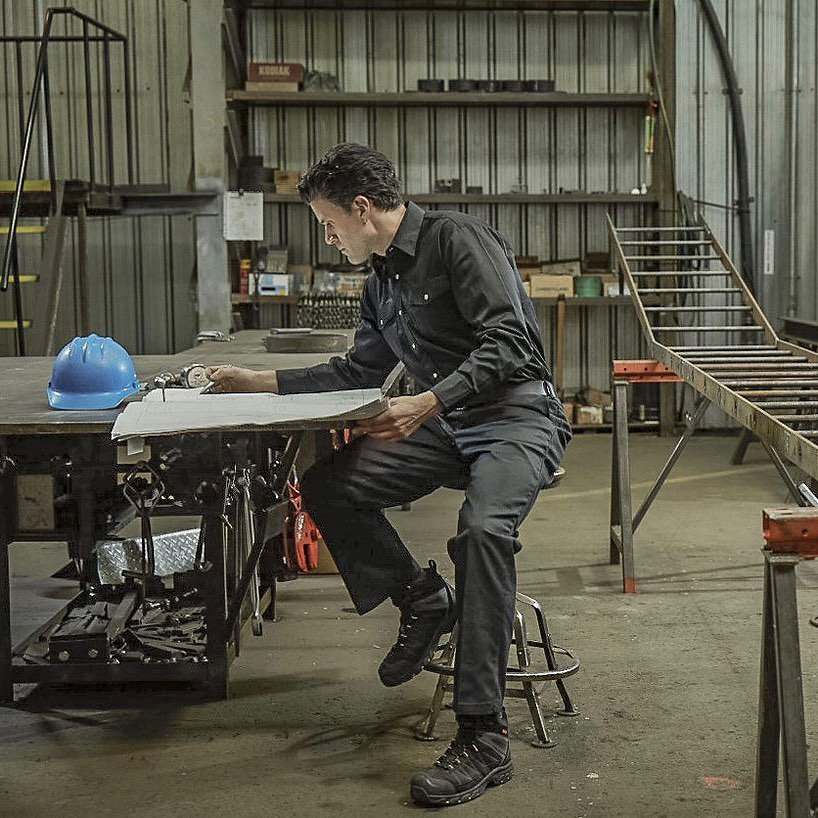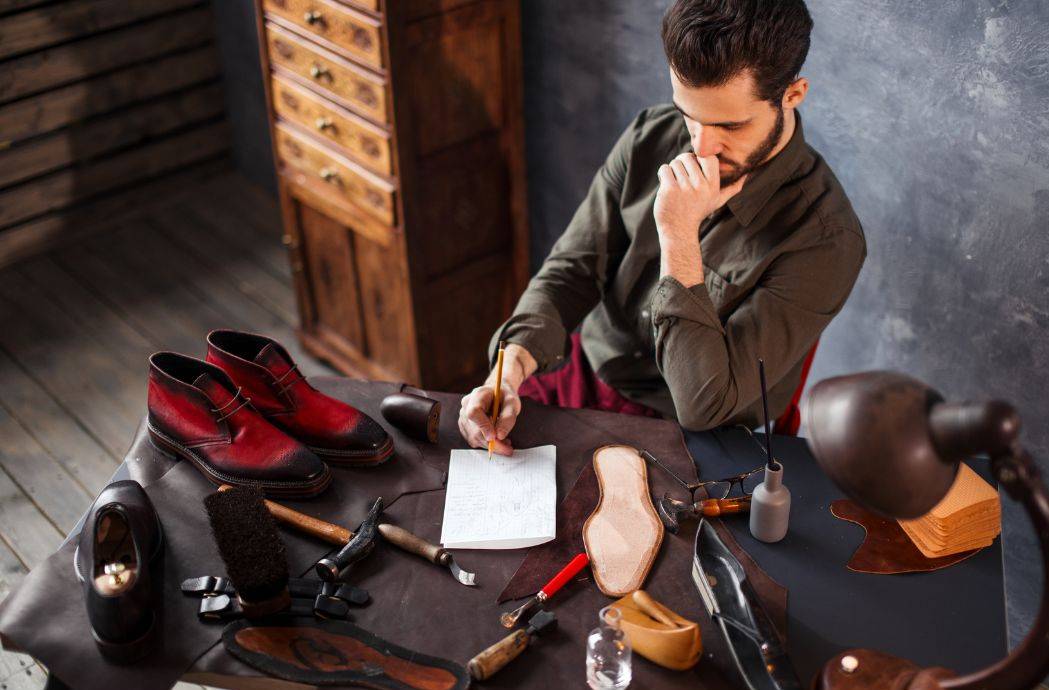Last Updated on August 1, 2024 by Sarah Jaffe
We’ve all been there – standing on our feet for hours on end, feeling like we’re walking on hot coals. Whether you’re a construction worker, a landscaper, or you work in a warehouse, wearing uncomfortable work boots can make your day feel like a never-ending nightmare. But fear not, fellow hard-working souls – there are ways to make your work boots more comfortable.
An article from Nicks Boots suggests that wearing work boots every day can lead to a lack of arch support, which can lead to a host of issues, including plantar fasciitis, problems with the ankles, knees, and hips, and sore and aching feet. But who has time for these issues when you have a job to do?
But fear not, there are things you can do to make your work boots more comfortable. We will take them into account and see how we can make our work boots more comfortable.
Importance of Having Comfortable Work Boots
Having comfortable work boots is of utmost importance, as they directly impact your overall well-being, productivity, and job satisfaction. When your feet are uncomfortable, every step becomes a painful chore, diminishing your energy and focus throughout the day.
Comfortable work boots promote foot health and prevent various foot ailments. Plantar fasciitis, tendonitis, and bunions are less likely to develop when you wear shoes that provide proper support, cushioning, and stability. In addition to keeping your feet comfortable, these boots prevent fatigue and potential long-term damage to your joints and muscles.
How To Make Work Boots More Comfortable?

In construction, manufacturing, and other physically demanding professions, work boots provide the necessary protection and durability. However, workers who wear work boots often complain about their discomfort. It is, fortunately, possible to make work boots more comfortable, making the job easier and less stressful
1. Get the right fit
When it comes to work boot comfort, getting the right fit is absolutely essential. Don’t rely on guesswork; instead, use a Brannock device or a measuring tape to accurately measure your feet. Measure both feet, as they can differ in size. Pay attention to length, width, and arch height. The Brannock device provides precise measurements for each foot, allowing you to select the correct boot size.
Proper length prevents cramped toes, while appropriate width prevents pinching or rubbing. Arch support is crucial for comfort, so choose boots that match your arch height. By accurately measuring your feet, you can find work boots that fit like a glove, providing optimal comfort and support throughout your workday.
2. Break them in
“Breaking in” a new pair of work boots can be a daunting task for many workers. However, it is an essential process that can make your work boots more comfortable and effective in protecting your feet.
One of the most effective ways to achieve this is by wearing them regularly. The more you wear them, the more they conform to the shape of your feet, reducing the likelihood of blisters and discomfort.
Another way to break in your work boots is by wearing them with two pairs of socks. This method helps to fill any empty space in the boots and create a snug fit. It also helps to reduce friction between your feet and the boots, thus preventing blisters.
You can also try gently applying heat to your leather boots. Hairdryers or the sun can be used to do this. As the leather softens, it becomes more comfortable and pliable.
Remember, breaking in your work boots takes time and patience. By following these tips, you can ensure that your work boots provide maximum comfort and protection on the job.
3. Add insoles

Insoles provide a layer of cushioning and support specifically designed to cater to your arches, alleviating foot and leg problems that can arise from long hours of standing or walking.
4. Wear the right socks

When it comes to work boots, opting for wedge-sole boots can be a great choice. These boots already offer a built-in incline from the heel to the toe, providing natural arch support. However, incorporating additional insoles takes the comfort factor up a notch.
By inserting insoles into your work boots, you give your arches an extra boost of cushioning and support. These insoles absorb the shock from each step, reducing stress on your feet and legs. They distribute your body weight evenly, minimizing pressure points that can lead to fatigue and discomfort. Your feet will stay happy and pain-free all day long thanks to the added cushioning.
Wearing the right socks can make a significant difference in the comfort of your work boots. Work boots are made from moisture-wicking materials, which keep your feet cool and dry. You may experience discomfort, blisters, and even fungal infections if you pair these boots with the wrong socks.
One of the best materials for work socks is merino wool. Even during long days on the job, this type of wool can keep your feet dry and cool because it is both breathable and moisture-wicking. Additionally, merino wool is soft and comfortable, which can help to prevent rubbing and irritation.
On the other hand, cotton socks should be avoided when wearing work boots. This is because cotton is not moisture-wicking, which means that it can take a long time to dry after getting wet. This can lead to moisture buildup, which can result in blisters, odor, and even fungal infections.
5. Check for wear and tear

Regularly checking for wear and tear in your work boots is vital for maintaining their comfort and preventing accidents. Over time, work boots can experience damage due to various factors like harsh weather conditions, challenging terrains, and frequent use. It’s important to inspect your boots for any visible signs of wear and tear, such as cracks, holes, or worn-out soles.
If you spot any damage, it’s crucial to address it promptly by either replacing or repairing the affected parts. Ignoring or neglecting damaged areas can lead to further discomfort and potential safety hazards.
By regularly inspecting your work boots for deterioration, you can identify potential risks before they escalate. As a result, your boots remain in optimal condition throughout the working day, providing you with support, protection, and comfort for your feet.
Checking your work boots for wear and tear can maximize their comfort and lifespan, allowing you to focus on the job at hand with confidence and ease.
6. Choose a different lacing methods

Various lacing techniques allow for customization, ensuring a secure and snug fit tailored to your foot shape and specific comfort needs.
One such method is the “heel lock” or “lace lock” technique, which involves creating a loop near the ankle to secure the heel firmly, preventing slippage and improving stability. This technique is especially beneficial for individuals with narrow heels.
Another method is the “parallel lacing” technique, where the laces run parallel to each other, distributing pressure evenly across the foot and reducing hot spots or discomfort caused by uneven tension. This technique is useful for individuals with wider feet or those who require extra room in the toe box.
By experimenting with different lacing methods, you can find the one that suits you best, enhancing comfort, reducing foot fatigue, and increasing overall productivity at work.
7. Store them properly and maintain them
Proper storage and maintenance of work boots can significantly increase their comfort. When not in use, it’s important to store them in a dry and well-ventilated area to prevent moisture buildup and the growth of bacteria and fungi that can cause bad odors and foot infections.
It’s also recommended to store work boots away from direct sunlight and heat sources as this can cause the material to warp and crack. Regular maintenance is crucial to ensure that the work boots remain comfortable. This includes cleaning them after each use with a soft brush or cloth and using a conditioner or oil to keep the leather soft and supple.
8. Invest in quality work boots
Investing in quality work boots is the last option we’ll discuss, and it can greatly improve the comfort of your work boots. Quality work boots are designed with features that prioritize both comfort and functionality. Designed with durable materials such as premium leather or synthetic fabrics, they provide a comfortable fit and ensure long-term performance.
Often, these boots come with advanced cushioning technology, such as gel inserts or padded insoles, which provide superior shock absorption. Work boots with ergonomic designs conform to your feet naturally, reducing strain and preventing discomfort during long hours of wear.
Moreover, high-quality work boots are engineered with enhanced ventilation systems, moisture-wicking properties, and antimicrobial linings. Dry, cool, and odor-free features help keep your feet comfortable and fresh throughout the day.
In addition to providing superior support, durability, and breathability, high-quality work boots have a longer lifespan, resulting in a more comfortable experience.
For quality work boots, consider these top brands: Timberland, Red Wing, Wolverine, and Carhartt. These brands are recognized for their durable and reliable work boot options that prioritize comfort, safety, and performance.
FAQs
It is not recommended to wear work boots without socks. Socks provide cushioning, prevent blisters, and help to regulate the temperature inside your boots.
Yes, you can wear orthotics in your work boots. Orthotics are custom-made insoles that are designed to provide support and cushioning for your feet. You can take your work boots to a podiatrist or orthopedist to have orthotics made specifically for your feet.
If your work boots are causing blisters, try wearing thicker socks or using blister pads. You can also try using moleskin, a soft fabric that can be placed over the blister to protect it. If the blisters are severe, you may need to take a break from wearing your work boots until they heal.
Yes, you can replace the insoles in your work boots. In fact, many work boots come with removable insoles that can be easily replaced with more cushioned or supportive ones. This is an affordable and effective way to improve the comfort of your boots.
.
Conclusion
In conclusion, making work boots more comfortable is essential for anyone who spends a considerable amount of time on their feet. By choosing the right type of boots, using proper insoles, ensuring a good fit, and breaking them in properly, you can significantly improve the comfort level of your work boots and prevent foot-related injuries.
It is important to invest in high-quality boots that offer the necessary support and protection while also being comfortable to wear. With these tips in mind, you can make your workday more comfortable and productive, without sacrificing safety.

Sarah is the brains behind BootsNerd. Sarah Jaffe is a writer, editor, and boots lover based in Brooklyn, New York. She has done BA (Hons) in Footwear Design from De Montfort University, UK. She loves to write about boots and has a particular interest in vintage and sustainable fashion.